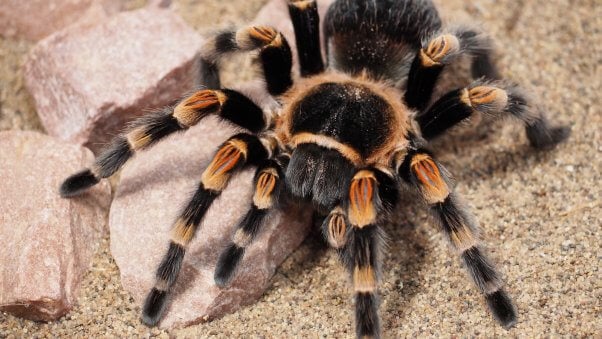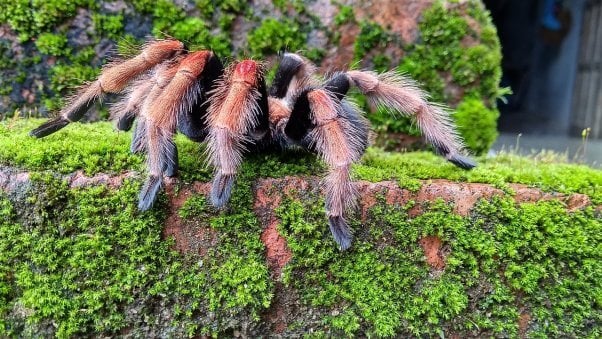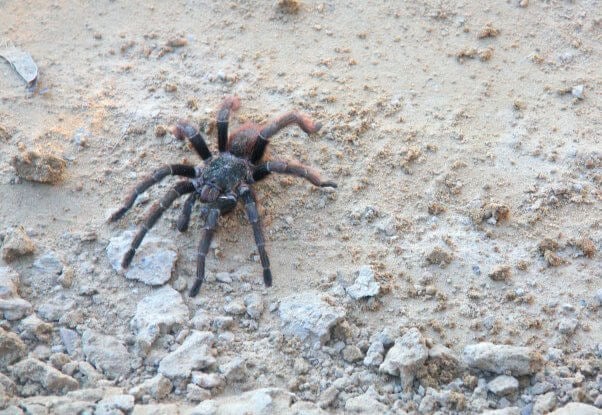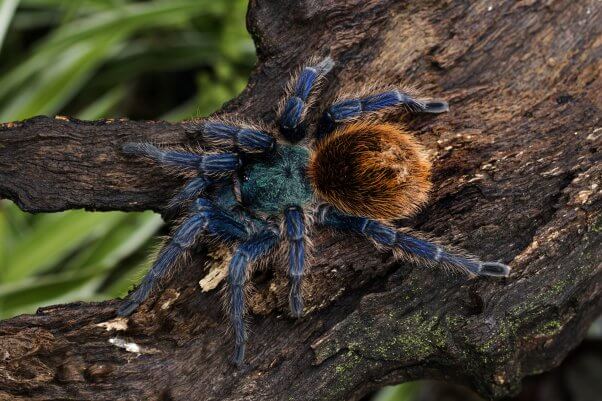There’s No Such Thing as a ‘Pet’ Tarantula
Just because you can keep a tarantula in your home doesn’t mean you should. Read on to find out why keeping them as “pets” is a bad idea and why they belong in nature, not captivity.
Tarantulas Just Aren’t Into You
You’ve heard it before: “It’s not you—it’s me.” Well, for tarantulas, it is you. These arachnids are naturally terrified of humans, who seem like giant predators to them. They don’t enjoy being picked up and held and won’t bond with you. In fact, due to their poor eyesight, they likely won’t even recognize you.

Tarantulas Can Live for Decades
The responsibility of caring for a tarantula can remain with someone from childhood well into adulthood. Male tarantulas can live to be about 10 years old, and females can live well into their 30s. And these animals have unique needs that can’t be met in a terrarium. Although they have distinct and varied personalities, they’re largely homebodies who spend most of their time in the safety and comfort of the soft burrows they dig into the earth. Their courtship rituals include music: The male strums the strands of web outside a female’s burrow, similar to the way humans strum guitars, and she responds by drumming with her legs. The females are devoted mothers, carefully wrapping their eggs in silk and rolling and rotating the sac every few hours for months until the babies hatch. Keeping a tarantula alone in a cage deprives them of everything that’s natural and meaningful to them.
Tarantulas Can Be Escape Artists
Since tarantulas don’t have good eyesight, they sense the world through vibrations that they pick up through their legs and body hair. This is largely why tarantulas usually move at a slow, plodding pace. If they’re running, that means they’re scared—so scared that they’re sacrificing their ability to “see” in order to get away from a perceived threat.

Big movements frighten tarantulas and may cause those in captivity to make a break for it. They’ve been known to run away during regular enclosure cleanings and feedings and through any holes in an enclosure, typically when they perceive human movements as threatening. Once they’re free, they’re exceptionally hard to catch, darting into small holes in walls, into vents, and even down drains.
Handling Tarantulas Can Result in Injuries
Holding tarantulas limits their ability to see and to feel the vibrations of the world around them. Naturally, this frightens them, making them likely to bite due to feeling blind, trapped, and threatened. Tarantulas’ fangs contain venom that can produce a burning sensation similar to that of a bee sting and may cause allergic reactions. They can also flick thousands of their tiny, barbed hairs at the threat, breaking the skin and causing itchy bumps that can last for weeks. These hairs can also get into the handler’s eyes. Tarantulas who are preparing to use these hairs will typically turn away from the threat and wiggle their lower torsos, which some people misinterpret as an invitation to pet them. Social media is filled with videos of people petting distressed tarantulas who are desperate to get away from them.

There’s No Ethical Way to Buy a ‘Pet’ Tarantula
Unlike dogs and cats, tarantulas aren’t domesticated animals. Any tarantula sold as a “pet” was either captured in nature or bred from others who were. The Mexican red-knee tarantula is now a threatened species, largely because exploiters have snatched so many of them from their natural homes.
Breeders of small animals treat them as disposable merchandise, churning them out in deplorable conditions similar to those found at puppy mills. Pet stores sell them to anyone willing to pay, often with insufficient care instructions and without caring whether they can provide appropriate living conditions. If someone is profiting from the sale of an animal, you can bet that animal welfare is never their priority. Every arachnid is someone, and every one of them belongs in nature, not a tank. If you care about them, don’t buy them. Let them live free.

Pet stores and breeders are major players in an uncaring and deadly industry. Treated as disposable merchandise, countless animals—including tarantulas, birds, fish, cats, dogs, rodents, and reptiles—are born (or hatched) into the pet trade every year. They’re ultimately sold to anyone willing to pay for them, and the resultant animal suffering is immeasurable. With millions of homeless animals in U.S. shelters at any given time, there’s no such thing as “responsible breeding,” and if someone is profiting from the sale of an animal, you can bet that animal welfare was never that person’s priority. That’s why PETA is on a mission to stop animal suffering in the pet trade before it starts. Together, we can break the cycle of breeding and buying that drives our country’s companion animal overpopulation crisis.




